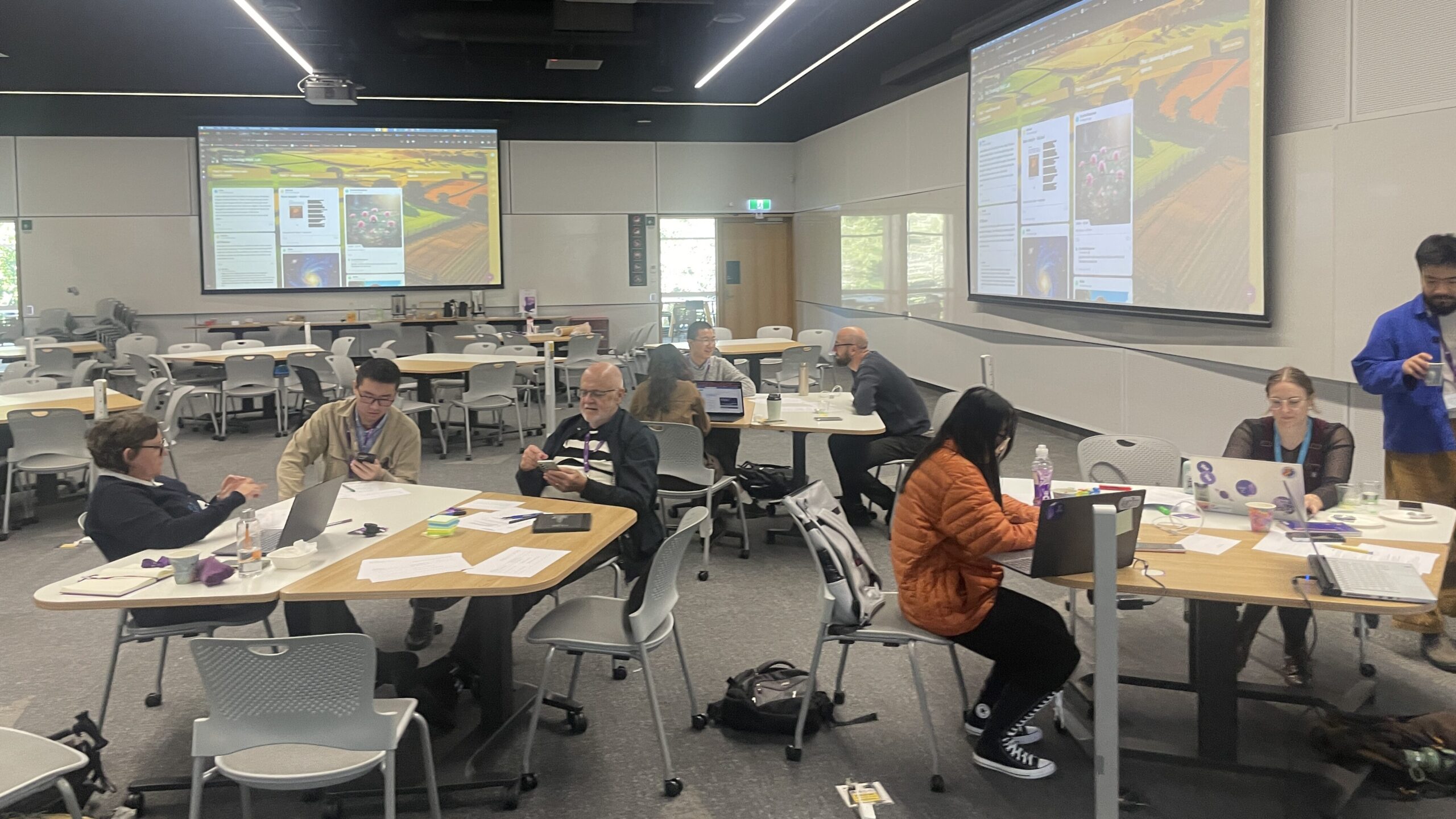Here’s a little write-up of a workshop I ran at University of Queensland a few weeks ago; these sorts of write-ups are usually distributed via various internal university networks and publications, but I thought I’d post here too, given that the event was a chance to share and test some of the various weird AI experiments and methods I’ve been talking about on this site for a while.
A giant bucket of thanks (each) to UQ, the Centre for Digital Cultures & Societies, and in particular Meg Herrman, Nic Carah, Jess White and Sakina Indrasumunar for their support in getting the event together.
Living in the Slopocene: Reflections from the Re/Framing Field Lab
On Friday 4 July, 15 researchers and practitioners gathered (10 in-person at University of Queensland, with 5 online) for an experimental experience exploring what happens when we stop trying to make AI behave and start getting curious about its weird edges. This practical workshop followed last year’s Re/Framing Symposium at RMIT in July, and Re/Framing Online in October.
Slop or signal?
Dr. Daniel Binns (School of Media and Communication, RMIT University) introduced participants to the ‘Slopocene’ — his term for our current moment of drowning in algorithmically generated content. But instead of lamenting the flood of AI slop, what if we dived in ourselves? What if those glitchy outputs and hallucinated responses actually tell us more about how these systems work than the polished demos?
Binns introduced his ‘tinkerer-theorist’ approach, bringing his background spanning media theory, filmmaking, and material media-making to bear on some practical questions: – How do we maintain creative agency when working with opaque AI systems? – What does it look like to collaborate with, rather than just use, artificial intelligence?

You’ve got a little slop on you
The day was structured around three hands-on “pods” that moved quickly from theory to practice:
Workflows and Touchpoints had everyone mapping their actual creative routines — not the idealised versions, but the messy reality of research processes, daily workflows, and creative practices. Participants identified specific moments where AI might help, where it definitely shouldn’t intrude, and crucially, where they simply didn’t want it involved regardless of efficiency gains.
The Slopatorium involved deliberately generating terrible AI content using tools like Midjourney and Suno, then analysing what these failures revealed about the tools’ built-in assumptions and biases. The exercise sparked conversations about when “bad” outputs might actually be more useful than “good” ones.
Companion Summoning was perhaps the strangest: following a structured process to create personalised AI entities, then interviewing them about their existence, methodology, and the fuzzy boundaries between helping and interfering with human work.



What emerged from the slop
Participants appreciated having permission to play with AI tools in ways that prioritised curiosity over productivity.
Several themes surfaced repeatedly: the value of maintaining “productive friction” in creative workflows, the importance of understanding AI systems through experimentation rather than just seeing or using them as black boxes, and the need for approaches that preserve human agency while remaining open to genuine collaboration.
One participant noted that Binns’ play with language — coining and dropping terms and methods and ritual namings — offered a valuable form of sense-making in a field where everyone is still figuring out how to even talk about these technologies.
Ripples on the slop’s surface
The results are now circulating through the international Re/Framing network, with participants taking frameworks and activities back to their own institutions. Several new collaborations are already brewing, and the Field Lab succeeded in its core goal: creating practical methodologies for engaging critically and creatively with AI tools.
As one reflection put it: ‘Everyone is inventing their own way to speak about AI, but this felt grounded, critical, and reflective rather than just reactive.’
The Slopocene might be here to stay, but at least now we have some better tools for navigating it.
Leave a Reply